Ingenious ways countries are adapting to climate change
Ingenious initiatives and megaprojects that could help save the world
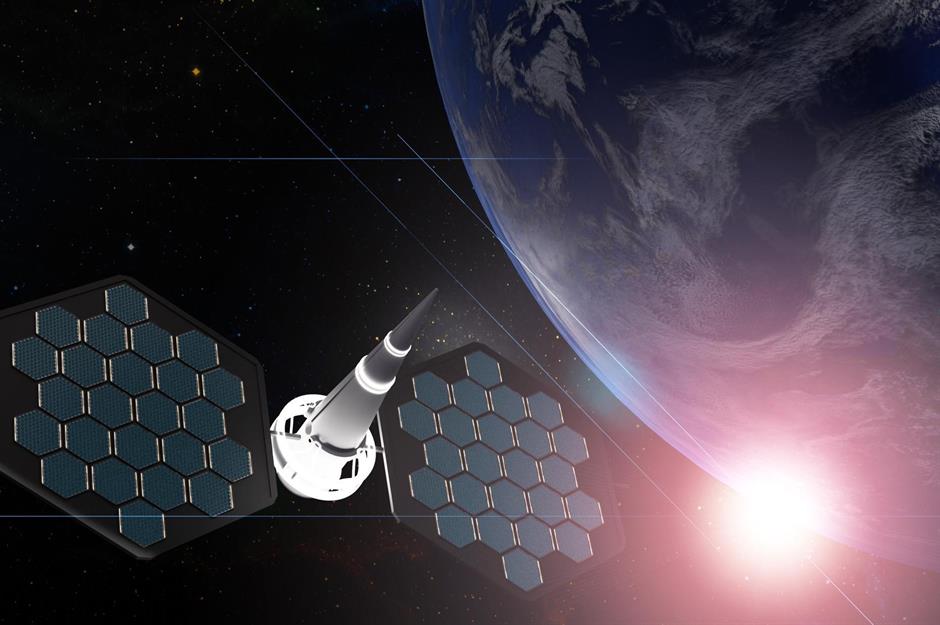
As a result of climate change, cities and countries around the world are facing rapidly rising sea levels, extended periods of drought, and other extreme weather conditions.
For many of these places, it’s too late to build infrastructure that can prevent ever-shifting weather patterns. Instead, it’s time to mitigate or adapt to the scenarios they're facing, with plans ranging from the cultivation of green spaces to the construction of brand-new cities.
Read on to discover the innovative measures already in place and the megaprojects of the future that could help save the planet.
All dollar amounts in US dollars.
LA's white streets
Think of Los Angeles and you probably think of sunshine. But in recent years, the drought-stricken region has endured unbearably scorching summers due to the urban heat island (UHI) effect, which means its metropolitan areas have grown significantly hotter than its nearby rural regions.
On sunny days, dark surfaces such as buildings and asphalt absorb light and convert it into heat, which is then trapped within the city until darkness falls and it has time to dissipate. This means cities stay much hotter for much longer.
LA's white streets

Los Angeles had its third hottest year on record in 2017, sparking the decision that action was needed to mitigate the UHI effect.
Then-mayor Eric Garcetti set a goal to lower the city's temperature over the next 20 years. This included a pilot programme to paint the streets with a white-grey solar-reflective coating in three neighbourhoods in a bid to cool the road surface.
Working with academic researchers, preliminary testing suggests this method can reduce temperatures by as much as 12°C (10°F).
Athens' green spaces
One of the world’s oldest cities, the densely-built urban environment of Athens covers approximately 80% of its surface area.
Much like LA, the Mediterranean capital is increasingly experiencing extended heatwaves, with its asphalt streets and concrete buildings soaking up the sun and creating urban heat islands.
What's more, the city's hard surfaces have also led to flooding issues during wet weather, as there are few green spaces to soak up rain. Forest fires are commonplace in the history-rich capital, with heatwaves stoking their severity.
Athens' green spaces
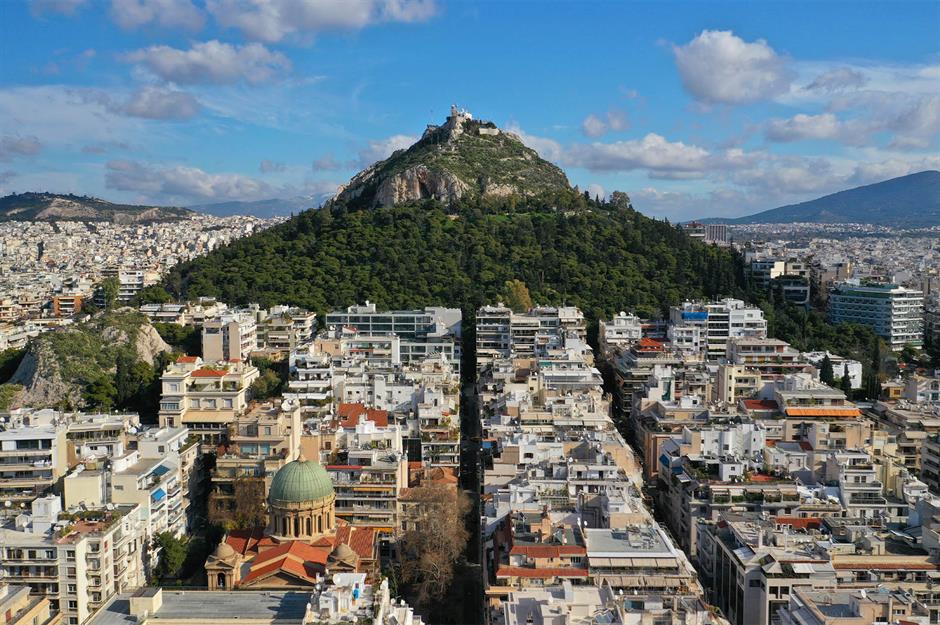
To help tackle the problem, city officials have created an ambitious "greening" goal as part of Athens’ wider resilience strategy, with green spaces (or surfaces that are permeable to water, at least) to extend across 30% to 40% of the city's urban areas by 2030.
Thanks to a €55 million ($59m/£48m) loan from the European Investment Bank in 2018, the city has been able to target four initial projects. This includes reviving the hilly Mount Lycabettus (pictured) by improving water management and erosion control, as well as creating green corridors that will connect the historic urban forest to other hills and pedestrianised areas of the city.
The overall goal is to improve biodiversity, lower temperatures, and improve air quality in the neighbourhoods of Athens.
Regreening the Sinai Peninsula

There are similar goals for the vast sand dunes and desert mountain landscapes stretching across Egypt's Sinai Peninsula, south of the Mediterranean Sea and Lake Bardawil.
The region sees very little rain and experiences scorching summer temperatures that can reach 42°C (107°F), leaving local populations vulnerable to heatwaves, sandstorms, and flash flooding.
This hasn’t always been the case, though. The Sinai Peninsula was once green and lush with lagoons and wetlands – completely different from its current environment.
Regreening the Sinai Peninsula

Engineering firm The Weather Makers has a vision for transforming the Sinai Peninsula back into a green paradise, starting at Lake Bardawil. It's an incredibly complex process that would dredge up lake sediment to improve the region's soil and hopefully encourage vegetation to spread across the land. On a large enough scale, the team anticipates it could trigger the ancient ecosystem and increase the region’s rainfall.
It may sound far-fetched, but a similarly daunting task has already been accomplished in northern China, where thousands of years of farming led to erosion in the Loess Plateau. Restoration efforts during the 1990s improved the soil, and eventually parts of the region’s ecosystem recovered (pictured).
Las Vegas' Intake No. 3.
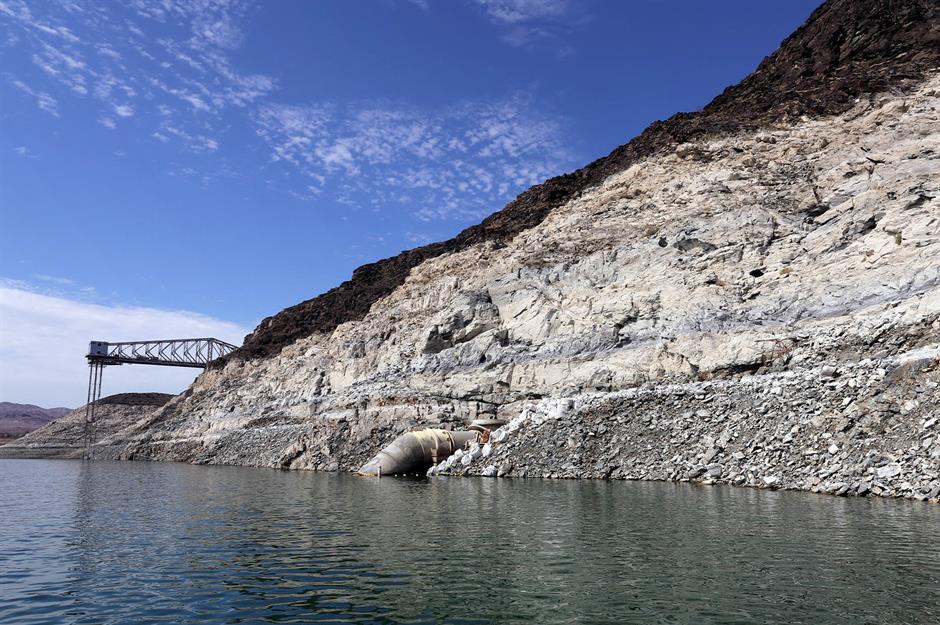
Drought is also an all-too-familiar challenge in Las Vegas. The desert city has seen unprecedented dry conditions over the last two decades and nowhere is this more evident than at its primary water source: Lake Mead, the reservoir formed by the Hoover Dam on the Colorado River.
Ringed in white residue left by minerals in the water at its former levels, it’s clear just how much depth has been lost since the lake was formed in 1937. By April 2022, Lake Mead had dropped to just 27% of its capacity – officially the lowest point in its history – which meant its original 1971-built water intake valve was visible above the water.
The intake is shown here in July 2022, illustrating how rapidly lake levels are dropping.
Las Vegas' Intake No. 3.

To tackle this, water agency Southern Nevada Water Authority (SNWA) constructed a third intake valve that was capable of drawing water at deeper lake elevations.
Construction began in 2008 and includes a 24ft (7m) diameter tunnel under the lake that connects to the intake structure. Intake No. 3 began conveying water to treatment facilities in September 2015.
SNWA still doesn’t expect the drought to end anytime soon. Instead, it's preparing residents for conditions to worsen as climate change continues and has implemented various conservation programmes. It's reported that residents of the city used 123 billion litres (27 billion gallons) less water in 2021 than in 2002, despite more than 745,000 people moving to the area during that time.
Singapore's NEWater
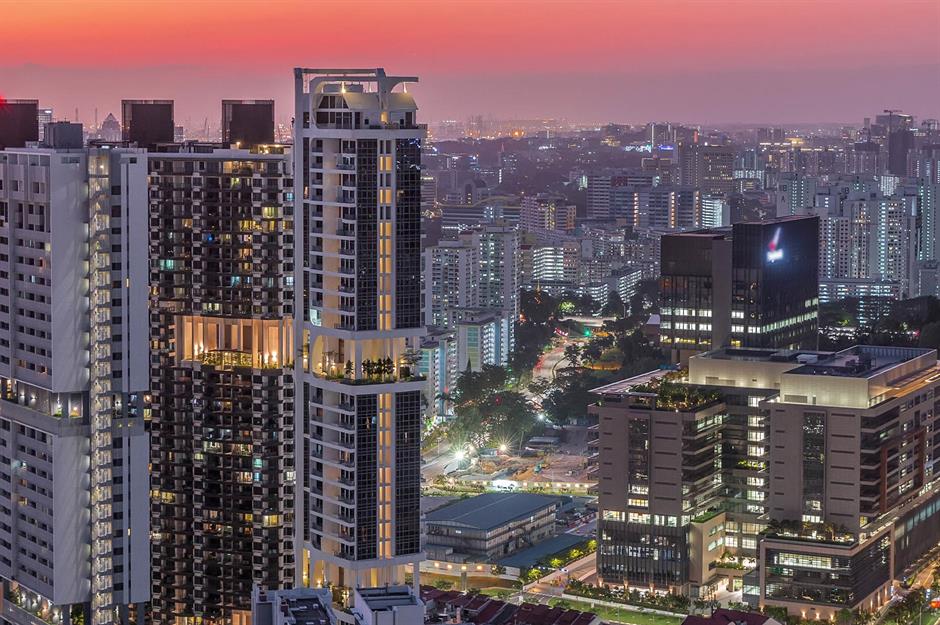
The threat that climate change poses to its water supply has long been a significant concern for city-state Singapore.
With one of the world’s highest population densities, Singapore has limited space available for rainwater catchment and storage. With no natural aquifers, its main water source has been neighbouring Malaysia. However, these imports require expensive treatment and desalination and are scheduled to end in 2061.
Singapore's NEWater
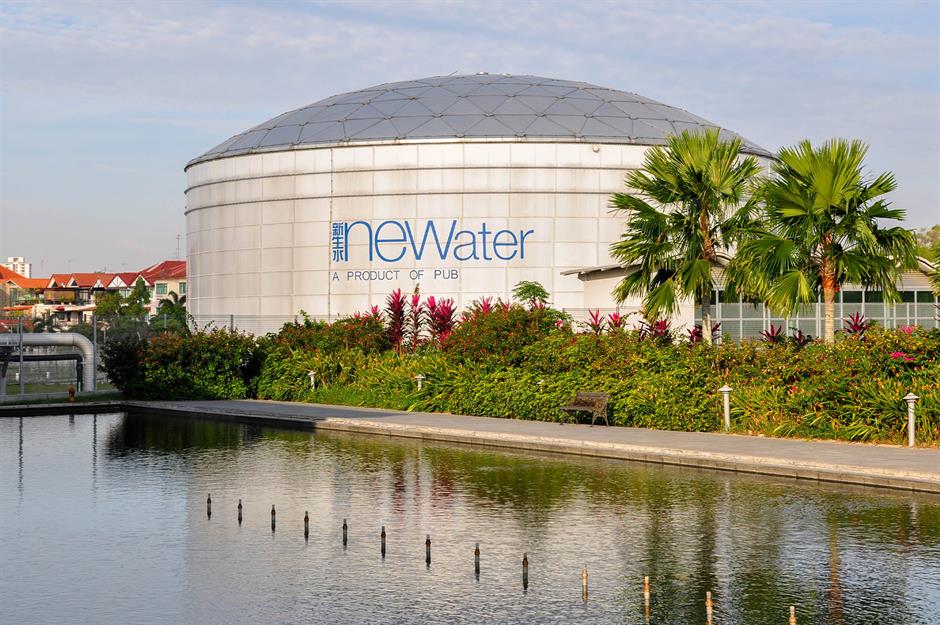
With options thin on the ground, Singapore has invested in water reuse. It's created NEWater, which is the brand name given to the nation's highly treated reclaimed wastewater.
First introduced in 2003, NEWater is recycled from treated sewage through a rigorous purification process that includes reverse osmosis and ultraviolet disinfection. For many, the idea is stomach-churning, despite decades of tests consistently confirming that NEWater is well within the World Health Organisation’s requirements for safe-to-drink water.
However, a massive ongoing public awareness campaign has successfully started to win people over and around 40% of Singapore’s daily water demand is now from NEWater. That figure is anticipated to rise to 55% by 2060 as more plants are developed.
Santiago's biofactories
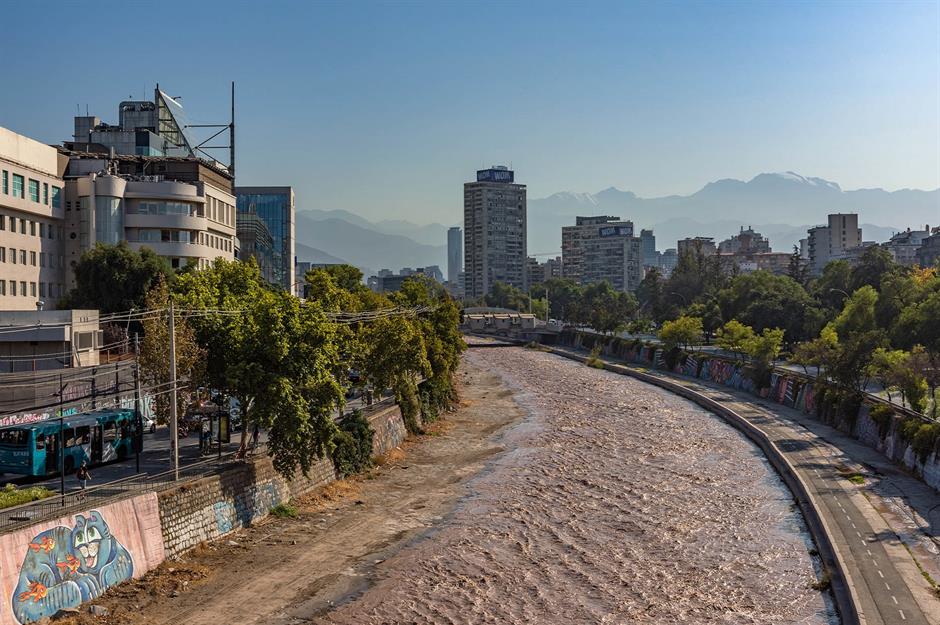
In 2005, as much as 96% of the wastewater in the Chilean capital of Santiago was left untreated, effectively becoming sewer sludge that flowed into the Mapocho River.
As an important source of irrigation for local agriculture and water for the wider region, this had severe impacts on public health, largely in the form of hepatitis and cholera outbreaks.
But in 2017, water utility firm Aguas Andinas launched a project to end this pollution by transforming the city’s wastewater treatment plants into biofactories.
Santiago's biofactories
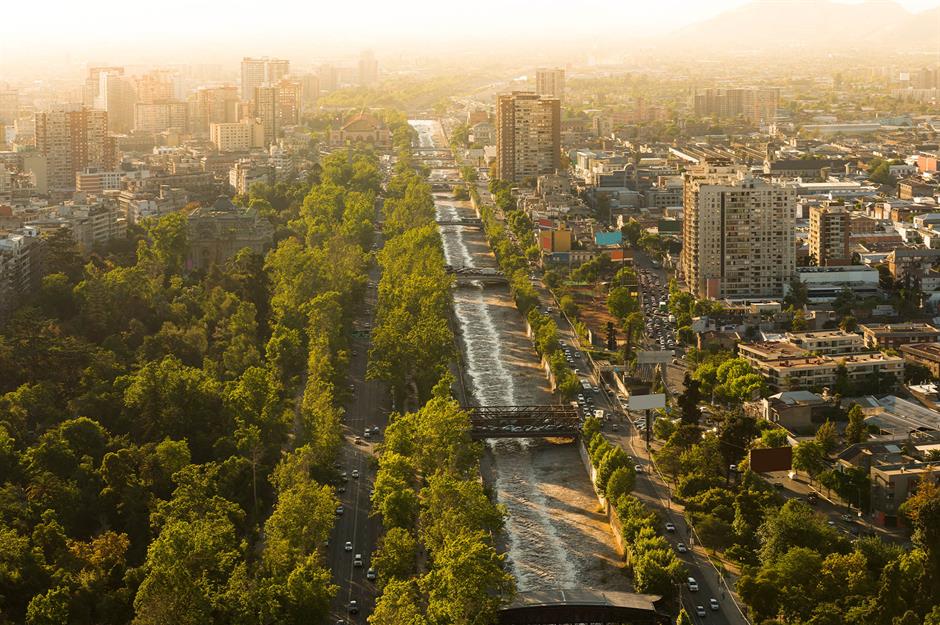
Now, wastewater is directed to Santiago’s updated plants and loaded with organic matter, such as sand, for treatment. Once disinfected, the fully-treated water is released to local waterways.
Among the waste produced by the sewer sludge in the biofactories are biogases, which are extracted and converted into electricity that's then used to power the plants. Other biosolids from the wastewater treatment plants are reused as fertiliser by local farmers. The plants also contribute to reducing greenhouse emissions in the face of climate change.
Malaysia’s SMART approach
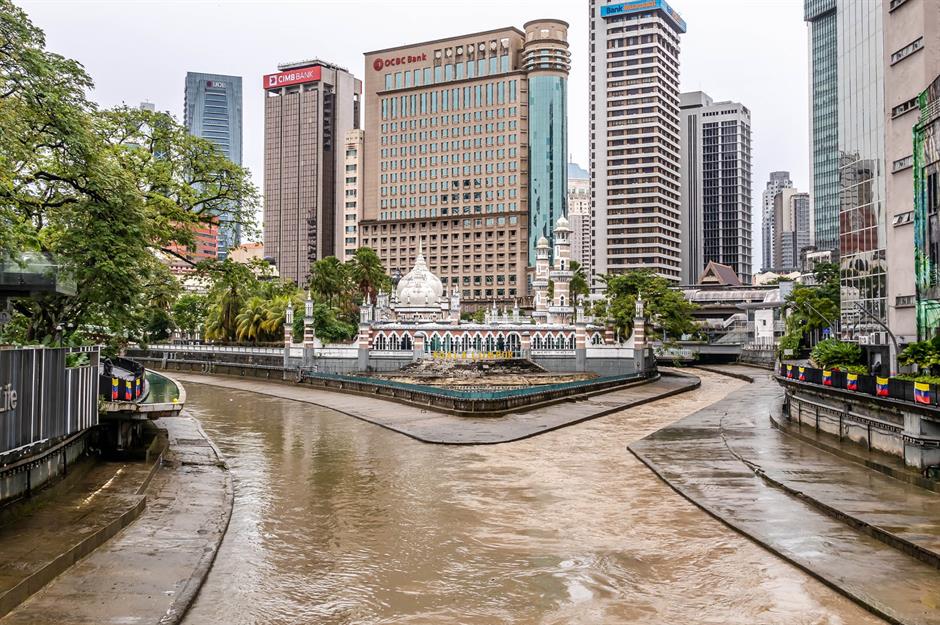
At the start of the millennium, the Malaysian government had two very different problems on its hands. In Kuala Lumpur, the Klang River often burst over its riverbanks, flooding the city centre. Meanwhile, traffic congestion in the same area plagued a six-mile (10km) stretch going south to Sungai Besi.
But an innovative plan to build the world's first dual-purpose stormwater diversion and motorway tunnel would solve both issues...
Malaysia’s SMART approach
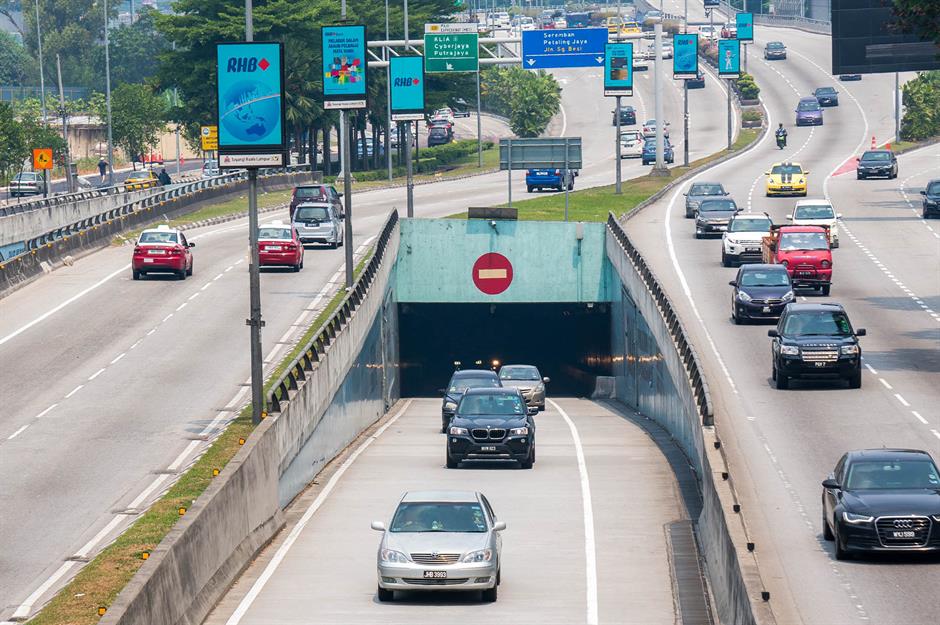
Known as SMART (Stormwater Management and Road Tunnel), the project was completed in 2007 and comprises a six-mile (9.7km) stormwater tunnel. A two-and-a-half-mile (4km) portion of this tunnel features a double-deck motorway.
During dry spells, the tunnels are open to traffic, reducing congestion. During high levels of rainfall, the tunnel is closed off, level by level as required, allowing extra capacity for stormwater.
Typically, it's reopened again within four days after a closure. The concept is estimated to address as much as 45% of the river’s major floods, especially within the more flood-prone areas of the city centre.
Rotterdam’s carpark storage tank

As the largest port in the Netherlands – not to mention Europe – Rotterdam has a long history of flood control and defence mechanisms.
These include storm surge barriers (pictured), water-resistant buildings, floating structures, and an extensive system of dykes. The city has also created a number of green spaces and other places that can act like sponges by absorbing water.
Yet despite these precautions, Rotterdam still has a watchful eye on the rising sea levels that have been caused by climate change...
Rotterdam’s carpark storage tank
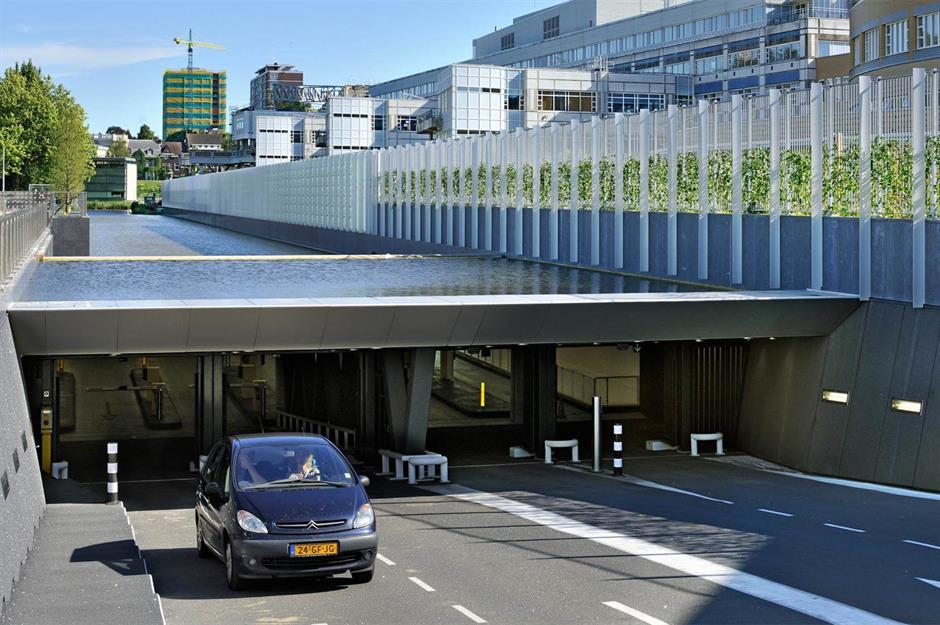
When the city needed to build a car park in the Museumpark neighbourhood back in the early 2000s, the Paul de Ruiter Architects firm developed a multipurpose solution.
Below the new parking facility – which can accommodate 1,150 cars, in case you were wondering – is one of the largest underground water reservoirs in the Netherlands.
As soon as the city sewers are in danger of overflowing due to rainfall, a hatch into the reservoir is opened, filling it with 10 million litres (2m gallons) of water in half an hour, reducing the pressure on the sewage system.
New York’s tunnel doors

In October 2012, Superstorm Sandy blasted the Atlantic coast, leaving an estimated $65 billion (£53bn) of damage in its wake.
The storm devastated New York City’s transit system, flooding tunnels and destroying electrical systems due to corrosion from the saltwater. More than 227 million litres (60m gallons) gushed into the Hugh L. Carey Tunnel (formerly the Brooklyn-Battery Tunnel) and it took a full month of 24-hour work to drain this vital road link between Lower Manhattan and Brooklyn.
New York’s tunnel doors

Since then, the Metropolitan Transportation Authority (MTA) has spent nearly $8 billion (£6.5bn) on repairing the damage and upgrading the transit system to better withstand future storms.
For the subway network, it installed mitigation devices such as gates and massive flood doors, while MTA Bridges & Tunnels took advantage of the reduced traffic volumes of lockdown in May 2020 to ready its flood gates at the Hugh L. Carey Tunnel. Each door is 14ft (4m) high, 29ft (9m) wide, and 22 inches (56cm) thick.
And it's not just a Hurricane that the city is worried about...
New York’s barriers
Flooding is becoming increasingly common in New York City. Its sewer system is unable to keep pace with heavy rainfall, which results in run-off filling subway stations and basement apartments.
"This changing weather pattern is the result of climate change, and the sad reality is our climate is changing faster than our infrastructure can respond", Rohit Aggarwala, commissioner of the New York City Department of Environmental Protection, said in October 2023.
Overhauling the sewer system to accommodate rainfall as severe as that seen during 2021’s Storm Ida (pictured) would cost an estimated $100 billion (£81bn), and take decades to complete.
New York’s barriers

A big solution is needed for the Big Apple – and the US Army Corps of Engineers (USACE) has released a plan to protect New York City from this type of increasingly common storm.
With a proposed cost of around $56.2 billion (£46bn), the project would involve the construction of large storm surge structures, similar to those seen in the Netherlands, to protect low-lying areas. Other infrastructure would include breakwaters, seawalls, levees, and floodwalls.
As this is only a suggested plan, very little design work has been undertaken and the USACE says there is a "considerable amount of work left" to be done on the study before it can be taken to Congress.
Indonesia’s new capital
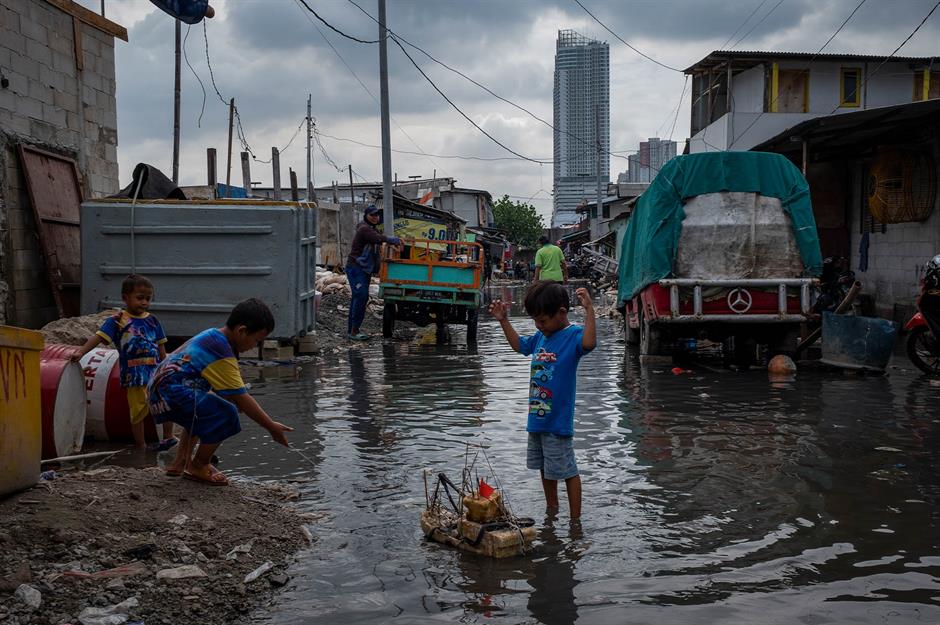
Like a number of other cities around the world, Jakarta is sinking due to depleting groundwater sources, which makes it vulnerable to flooding and subsidence.
Climate change also means the Indonesian capital is facing rising sea levels and an increase in torrential rainfall. As much as 40% of the densely populated city is below sea level, and this recipe for disaster is already causing regular flooding, especially when there are high tides in play too.
Indonesia’s new capital

The government of former president Joko Widodo developed ambitious plans to relocate the capital to Nusantara, on the island of Borneo.
Extensive work will be required to construct roads, as well as water and sanitation infrastructure, a new parliament, and other governmental buildings. The relocation will cost an estimated $35 billion (£29bn) and the government hopes 80% of that funding will come from foreign investment, particularly from developers who could build housing, shopping malls, and office buildings.
The first phase of construction is 80% complete, with plans to relocate up to 1.9 million people to Nusantara by 2045.
The Maldives Floating City
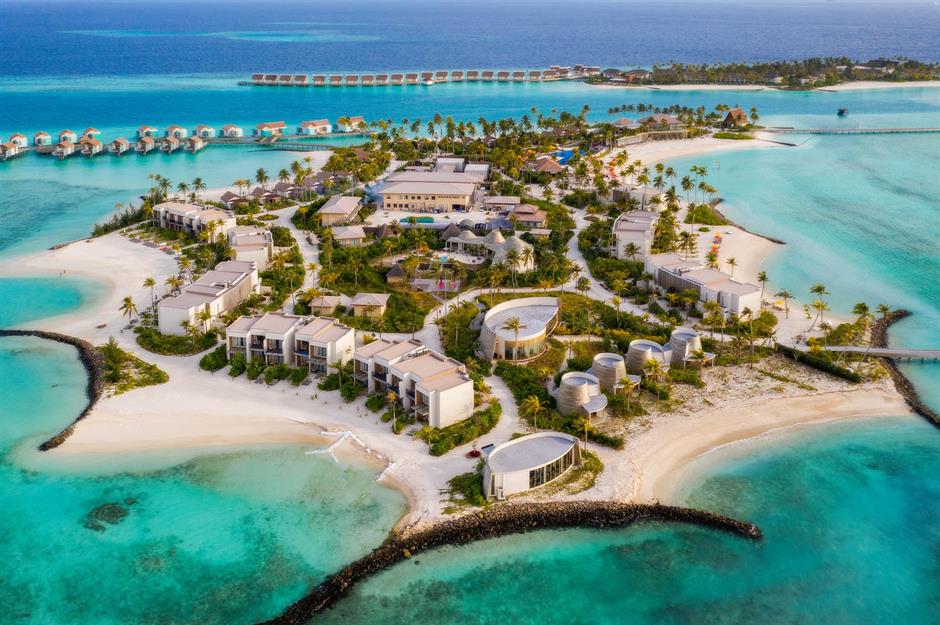
Around 1,200 small islands make up the Maldives, with approximately 80% of the nation's land sitting at less than one metre above sea level.
Current forecasts predict that almost all the islands will be underwater by the end of the century, including the capital city Male, which is one of the most densely populated cities in the world.
With climate change posing such an extreme threat, mitigation measures such as sea barriers have not been worth pursuing for the archipelago nation. However, hope is not lost. “In the Maldives we cannot stop the waves, but we can rise with them”, former president Mohamed Nasheed said in 2021.
The Maldives Floating City
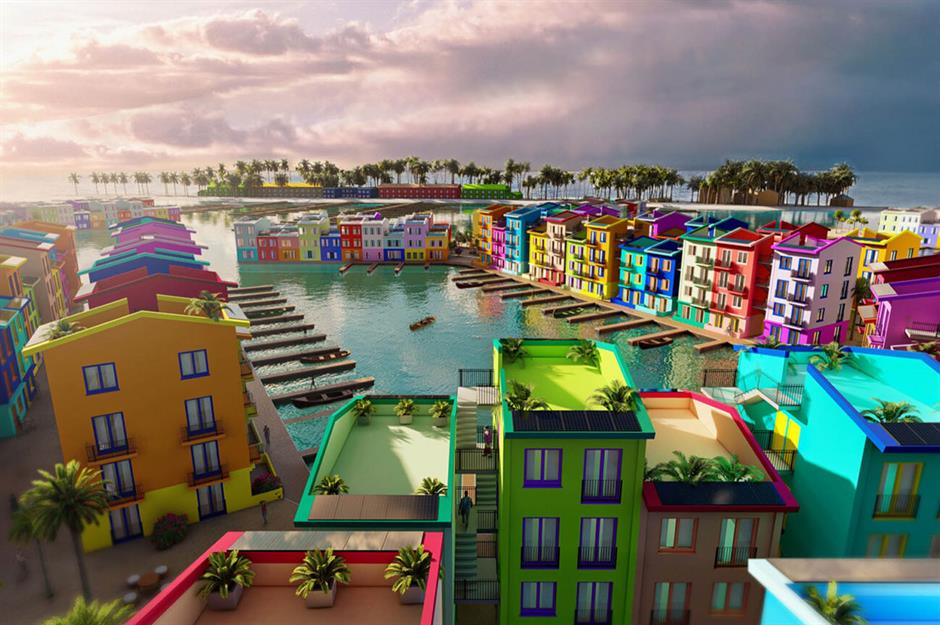
And that’s exactly the plan. Much like Indonesia, the Maldives is building a new city, thanks to a partnership with Netherlands-based developer Dutch Docklands. However, this one is far more unconventional.
The Maldives Floating City will be the world’s first true floating island city and is being built in a lagoon that's located a 15-minute sail away from Male.
The city’s various structures, as well as amenities such as parks, will all be built on individual floating platforms that will be interconnected. Construction started in summer 2022 and the entire city, which will include 5,000 homes, is expected to be ready within five years at an estimated cost of $1 billion (£800m).
Japan’s Dogen City
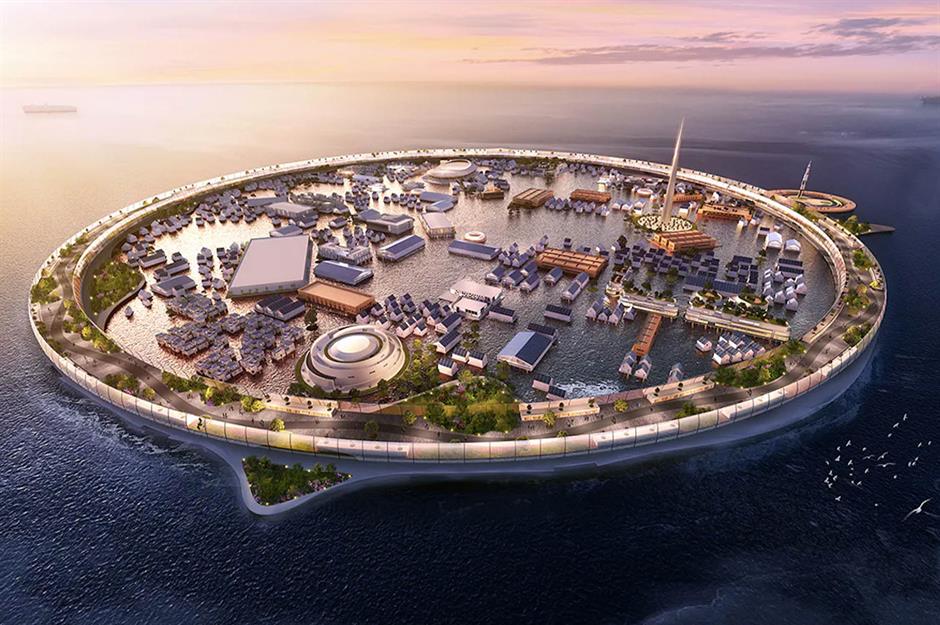
Japanese design and architecture firm N-ARK has also proposed building a floating 'healthcare city'. Named Dogen City, the firm envisions a one-mile-wide (1.6km) village on the water that would be home to around 10,000 residents, as well as playing host to daily commuters.
The floating ring would move freely in the water, making it more resilient and responsive to the impact of climate change and other natural disasters, such as the 2011 earthquake and tsunami that devastated parts of northeastern Japan.
Japan’s Dogen City
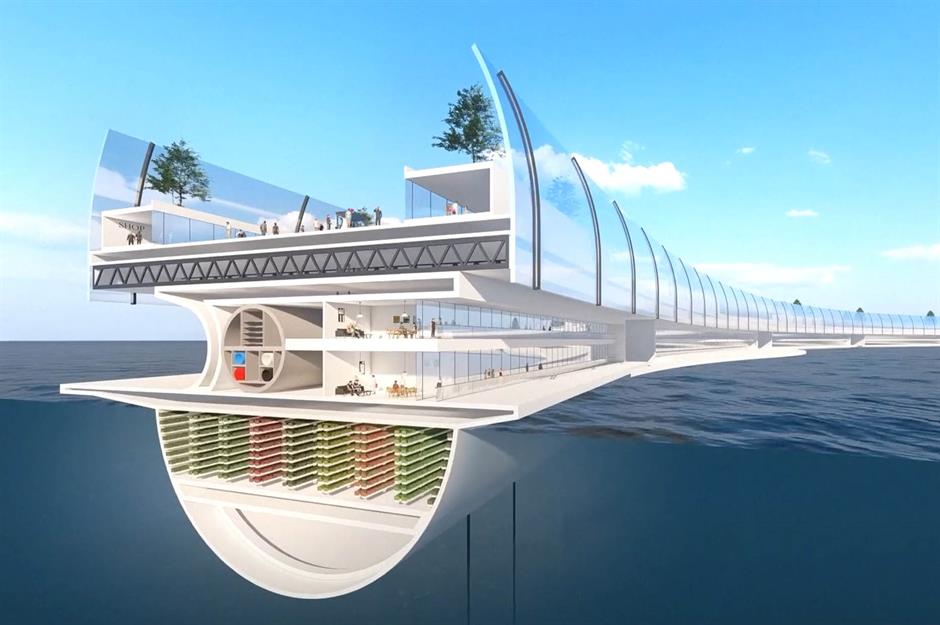
The N-ARK vision brings a healthcare twist to the city concept that's being floated in the Maldives. Dogen City would strive to offer a "disease-free society" thanks to telemedicine and other smart healthcare innovations and medical research facilities.
With its moat-like structure, the self-sustaining city would stand alone in the event of natural disasters, with energy and production of "medical cuisine" all happening on-site. N-ARK has also confirmed there would be launching and landing capabilities for rocket transportation.
As impressive as all this sounds, there's no timeline or plan in place to start work on Dogen.
UAE’s low-carbon city
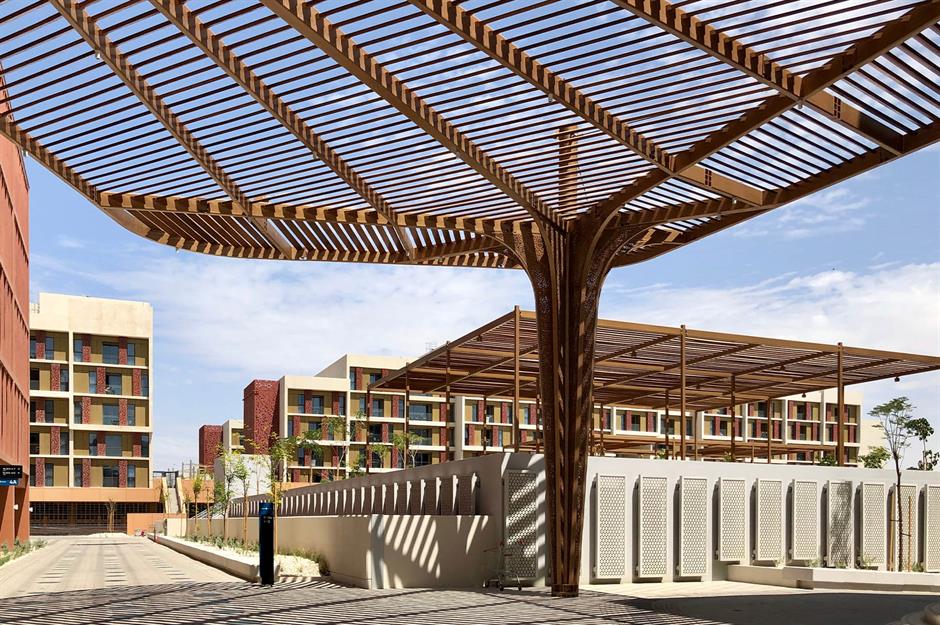
Well aware of its dependency on oil and fossil fuels, Abu Dhabi launched a $15 billion (£12bn) project to build a zero-carbon eco-city in the desert.
The work on Masdar City began in 2008, with initial plans calling for homes to accommodate 50,000 people, as well as enough space to host 1,500 eco-minded businesses, which in turn would create 10,000 new jobs.
This ambitious project was pegged to rely entirely on solar energy and other renewable energy sources, as well as being completely car-free. But there have been hiccups along the way...
UAE’s low-carbon city
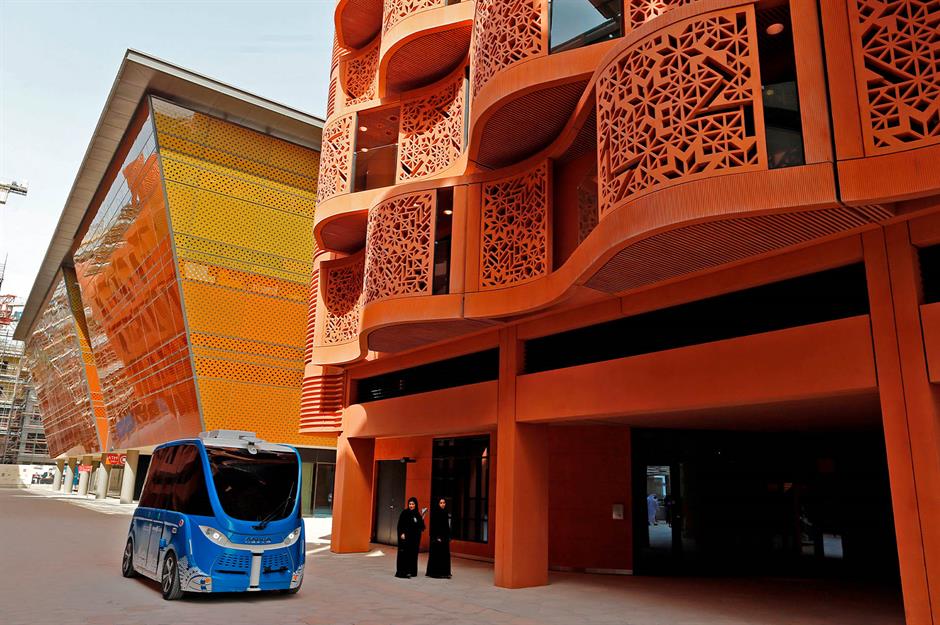
The 2009 financial crisis delayed development and construction beyond the initial 2016 completion date. Six buildings were able to open in 2010 and three more are on track to be completed soon.
The UAE says Masdar will now be a 'low-carbon' city rather than zero-carbon. The buildings currently under construction will be fully powered using solar energy. They'll make use of many high-tech features and passive design elements for cooling and ventilation, such as eschewing glass in favour of other insulation materials.
Denmark’s VindØ Energy Island
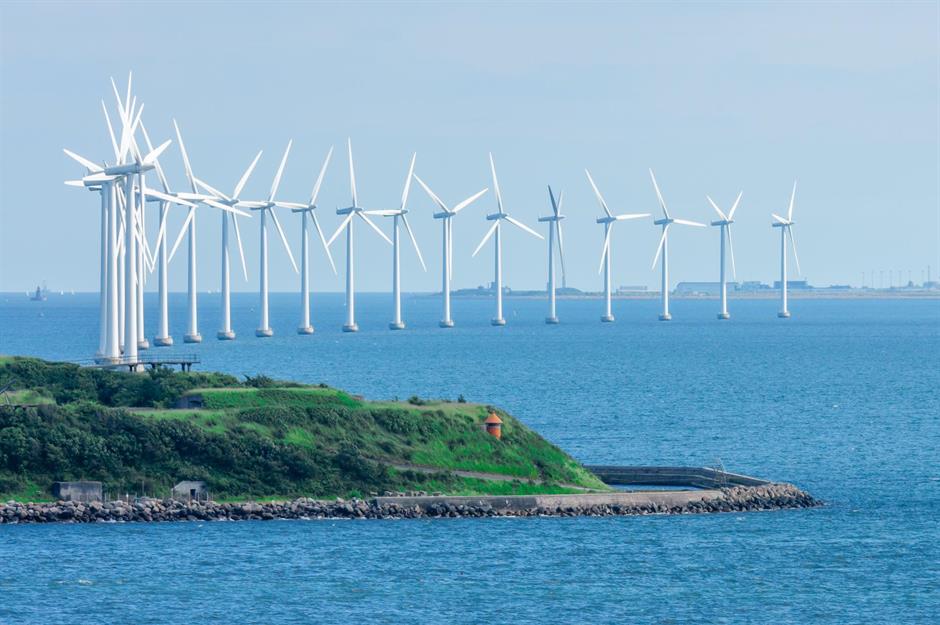
In 2020, Denmark pledged to end its oil and gas extraction activities in the North Sea by 2050. Thankfully, with its flat terrain and proximity to the sea, it's already sourcing plenty of renewable energy from wind power – as much as 67% of the electricity supply at times.
But more will be needed, and with its location in Northern Europe, solar farms are less efficient. Plus, climate change is likely to raise the risk of flooding.
Piling on further challenges, land is scarce due to Denmark’s small footprint and relatively high population density, so its future energy developments will likely need to be further offshore.
Denmark’s VindØ Energy Island
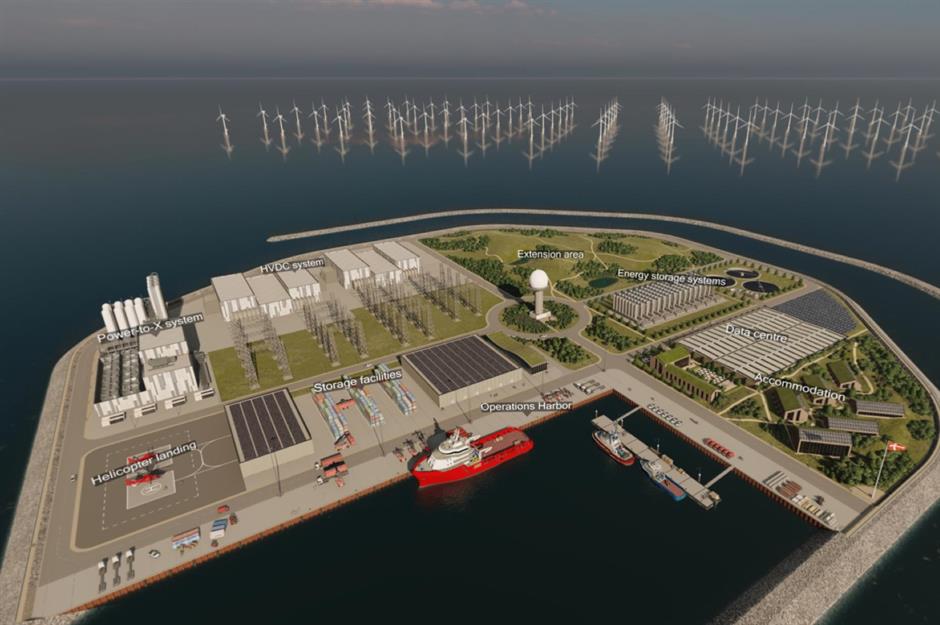
To meet the country's energy needs, the Danish government announced plans in 2021 to partner with the private sector to build the VindØ energy hub. This artificial island surrounded by wind farms would be built 62 miles (100km) out at sea, where there are optimal conditions for wind turbines.
Proposals originally called for the island to be operational by 2033, initially generating 3 GW of offshore wind with plans for this number to increase to 10 GW over time. The hub would also be home to energy storage, hydrogen-to-power facilities, and other necessary power supply equipment.
The government postponed the project’s tender in 2023 due to high costs but has not cancelled it.
Outer space solar satellites

Advancements in renewable energy are making solar and wind power more cost-effective, reducing carbon emissions around the world.
However, these technologies do have disadvantages – they're weather dependent, fixed in one location, and often take up a lot of space, including prized shorelines. On top of that, renewables are expected to meet only 35% of global power generation by 2025, according to the International Energy Agency (IEA).
To secure much needed energy supplies and meet climate change goals, wind, solar, and other renewables will need to scale up significantly.
Outer space solar satellites
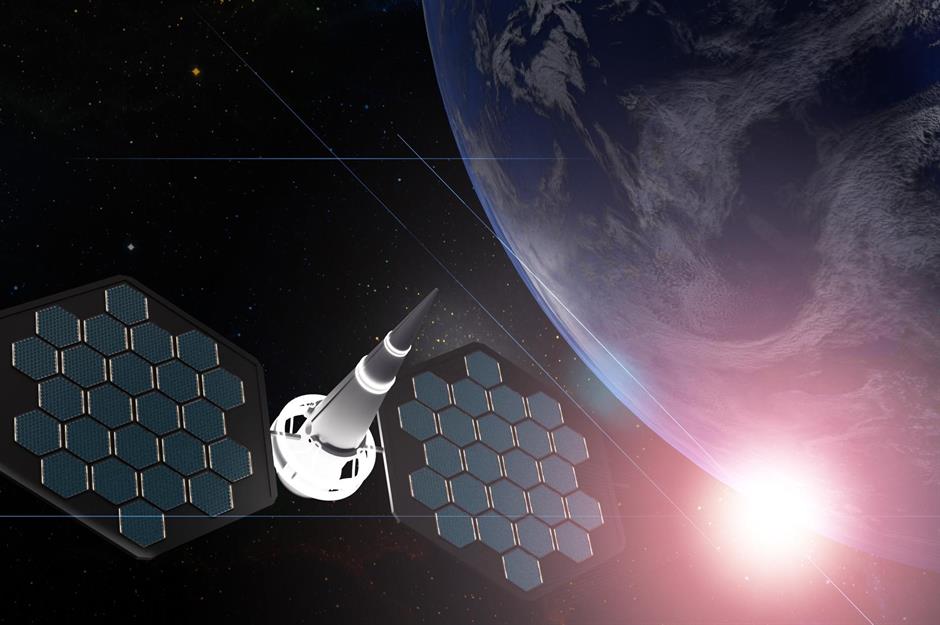
Engineers have already identified a solution to all of these challenges: space-based solar power.
Exactly as it sounds, this concept will involve collecting solar power with satellites in outer space before beaming it securely back to earth. According to the then UK government, which studied the technical feasibility and economic impact of the project in 2021, it would ensure clean energy in all weathers, day and night.
While this idea has been researched over the decades, it's never been seriously considered due to the high costs of space launches. Now, with companies like SpaceX achieving advancements in reusable space launch vehicles, the concept is getting attention from governments and private sector firms alike.
Now discover why the world's largest and most controversial megaproject faces an uncertain future
Comments
Be the first to comment
Do you want to comment on this article? You need to be signed in for this feature